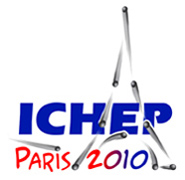Speaker
Dr
Paolo Bartalini
(NTU)
Description
Studies of the underlying event and forward processes are important tests of the standard model and inputs for Monte Carlo tuning. By selecting regions transverse and parallel to the hard parton-parton scatter, different aspects of non-peturbative QCD are enhanced and allow fine tuning of different Monte Carlo models. The underlying event in pp interactions, recorded by the CMS detector, is studied measuring the charged multiplicity density and the charged energy density in a region perpendicular to the plane of the hard 2-to-2 scattering. Two different methodologies are adopted to identify the direction and the energy scale of the hard scattering in Minimum Bias events that rely on the leading charged track and on the leading charged jet. The study allows to discriminate between various QCD Monte Carlo models with different multiple parton interaction schemes.
In addition, we present the measurement of the underlying event using the jet-area/median approach. We demonstrate its sensitivity to different underlying event scenarios and tunes on generator level after applying detector specific cuts and thresholds.
In the forward direction, the first measurement of forward energy flow in 3< eta < 5 in pp collisions up to highest energies of sqrt(s)=7 TeV will be presented. The energy flow is measured for minimum bias events and event having a dijet system in the central region. The energy flow is compared to various Monte Carlo models with different multiparton interaction schemes. We also present a measurement of forward jets with pt> 35 GeV and compare to model with different multiparton interaction schemes. In addition, the absence of energy deposition in the forward region is used to observe diffractive events. We compare our results with predictions from Monte Carlo event generators including a simulation of multiparton scattering. All four measurements can be used to determine the parameters of multiparton interaction models in a extended region of phase space.
Primary author
Manfred Krammer
(CMS)




